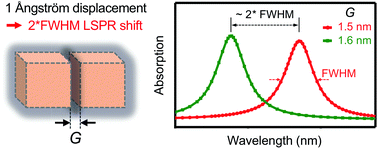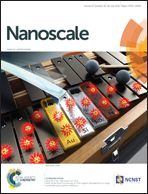Tunable dark plasmons in a metallic nanocube dimer: toward ultimate sensitivity nanoplasmonic sensors
Abstract
Metallic nanoparticles can function as label-free nanosensors monitoring the local dielectric environment in their close vicinity, thanks to the localized surface plasmon resonances. The sensing figure of merit is limited by the total loss rate of the plasmon. Here, we theoretically study a silver nanocube dimer and discover for the first time a dark plasmon with its total loss rate at the lower theoretical limit. It originates from the attractive coupling of the dipolar and quadrupolar mode in the individual nanocubes. It shows an unprecedented sensitivity to the interparticle gap distance, i.e., one ångström change in the gap distance results in a shift twice as large as the peak width. The sensing figure of merit using this dark plasmon is 56–61, reaching the ultimate value limited only by the material permittivity. The field of the mode is confined mainly within the gap region which is in the extreme deep subwavelength (3.5 × 10−6λ03) region. Besides sensing applications, the dark plasmon also shows foreseeable potential in enhanced spectroscopy, nanolasers and other nanophotonic devices.


 Please wait while we load your content...
Please wait while we load your content...